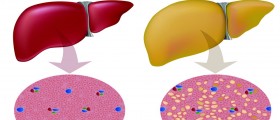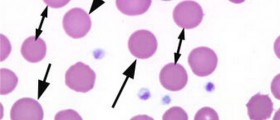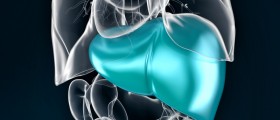
What is jaundice?
Jaundice, also known as icterus, is not a disease but rather a symptom of some other diseases or metabolic processes in the body. Jaundice is described as yellowish pigmentation of the skin, mucous membranes and conjunctiva of the eyes (whites of the eyes). Jaundice is caused by increased levels of bilirubin in the blood. Bilirubin is the product of normal heme catabolism. This heme is found in hemoglobin, and it is one of the main components of red blood cells. The yellow breakdown, bilirubin, is normally excreted in bile and urine, and any kind of increased levels of this substance in the body usually indicates some other underlying problem. However, not all changes in the levels of bilirubin are visible. A concentration of bilirubin in plasma must be three times the normal value for the coloration to become visible. This symptom is often observed in patients with liver diseases, especially those with hepatitis or liver cancer. Sometimes jaundice occurs in patients who have problems with biliary tract, usually due to the presence of the gallstones or pancreatic cancer.
Jaundice is often found in newborns, and diagnosed by the distinctive yellowish tint in the skin and the eyes of baby. Neonatal jaundice is usually harmless and it often occurs in infants around the second day after birth, lasting until day 8 in normal births, or to around day 14 in premature births. It occurs as a consequence of metabolic and physiological adjustments after birth.
Treatment for jaundice
The exact treatment for jaundice in adult patients will depend on the underlying cause of this symptom. Pre-hepatic jaundice, which is caused by anything which causes an increased rate in breakdown of red blood cells, is usually treated by preventing this rapid breakdown. In the cases of infections, jaundice is treated by treating the underlying condition. Sometimes, jaundice is caused by genetic blood disorders (sickle cell anemia or thalassaemia, for example) and treated by blood transfusions. If jaundice occurs as a result of liver damage, the treatment includes preventing any further liver damage from occurring and allowing the liver to repair itself over time.
In newborn jaundice, treatment is usually focused around phototherapy. This treatment uses fluorescent light that helps to transform bilirubin in other natural form the body can more quickly eliminate. In more severe cases, baby may need to receive immunoglobin, to prevent newborn's body destroying red blood cells. If this doesn’t help, doctors will usually administer a blood transfusion.
















-Symptoms,-Diagnosis,-Treatment_f_280x120.jpg)
Your thoughts on this
Loading...